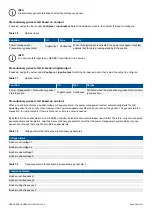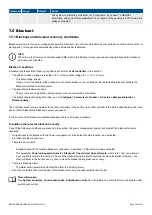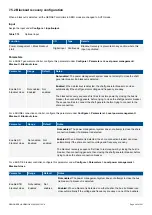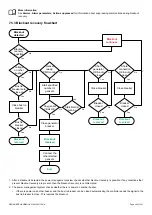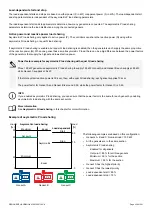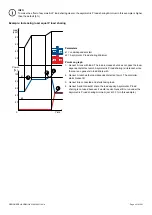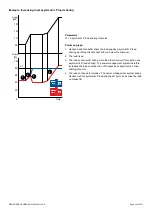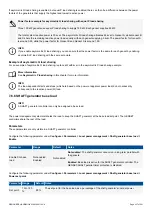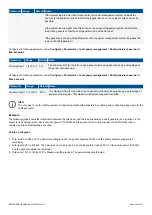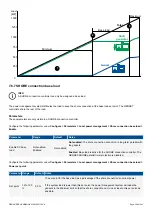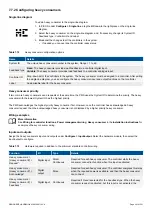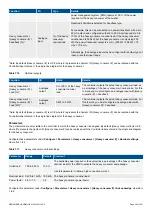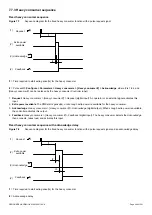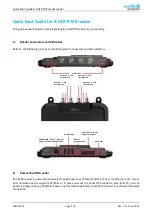
Parameter Range
Default
Notes
•
External ->
Parameter
•
Parameter
: The controller uses the
Set point
parameter as the set point for
asymmetric P load sharing.
•
External
: The controller uses the analogue input with
Local power
management > Asymmetric load sharing > P set point [%]
as the set point for
asymmetric P load sharing.
•
External ->
Off
: This is used if the asymmetric P load sharing set point from an
analogue input fails. That is, when the input for
Local power management >
Asymmetric load sharing > P set point [%]
is outside the configured scale. If
the external set point fails, then the controller turns off asymmetric P load
sharing.
•
External ->
Parameter
: This is used if the asymmetric P load sharing set point
from an analogue input fails. That is, when the input for
Local power
management > Asymmetric load sharing > P set point [%]
is outside the
configured scale. If the external set point fails, then the controller ignores the
analogue input and uses the
Set point
parameter as the set point for
asymmetric P load sharing.
Set point
1 to 100 % of
nominal active
power
80 %
The asymmetric P load sharing set point for the genset. Whenever possible, the
power management system adjusts the load of lower priority gensets, and gensets
without asymmetric P load sharing enabled, so that the gensets with asymmetric P
load sharing enabled can run at their set point.
Configure the following parameters under
Configure > Parameters > Power management rules > Configuration # > Asymmetric
load sharing > P configuration
.
These parameters apply to all the GENSET controllers in the section.
Parameter
Range
Default Notes
Minimum
1 to 100 % of nominal
active power
5 %
If the load percentage for any genset is less than this minimum, the power
management system stops asymmetric P load sharing. Equal P load sharing is
used instead. This minimum reduces frequency control problems for gensets
running at a low percentage of their nominal load. This minimum also reduces
the risk of reverse power.
Minimum delay 0 s to 1 h
0.5 s
To stop asymmetric P load sharing, the load percentage must be less than the
minimum for this period.
Maximum
1 to 100 % of nominal
active power
95 %
If the load percentage for any genset is more than this maximum, the power
management system stops asymmetric P load sharing. Equal P load sharing is
used instead. This maximum reduces the risk of genset overloading.
Maximum
delay
0 s to 1 h
0.5 s
To stop asymmetric P load sharing, the load percentage must be more than the
maximum for this period.
INFO
For a selected genset to supply a P
base load
, asymmetric P load sharing must be enabled in its GENSET controller. If
asymmetric P load sharing is enabled in more than one controller, then the P
base load
genset must always have the
highest priority in the section. To ensure a constant P base load and prevent equal P load sharing, the
Minimum
load
parameter must not be too high.
How it works
When asymmetric P load sharing is enabled for gensets, then, whenever possible, these gensets run at their asymmetric P load
sharing set points. If it is not possible for all the gensets with asymmetric P load sharing enabled to run at their set points, then only
the highest priority genset(s) run at their set points. The lowest priority connected genset(s) supply the remaining, fluctuating load.
Asymmetric P load sharing is only possible when the remaining load on the low priority genset is between the minimum and
maximum load percentage. If this is not possible, equal P load sharing is used for ALL the gensets.
DESIGNER'S HANDBOOK 4189340911K UK
Page 249 of 521






